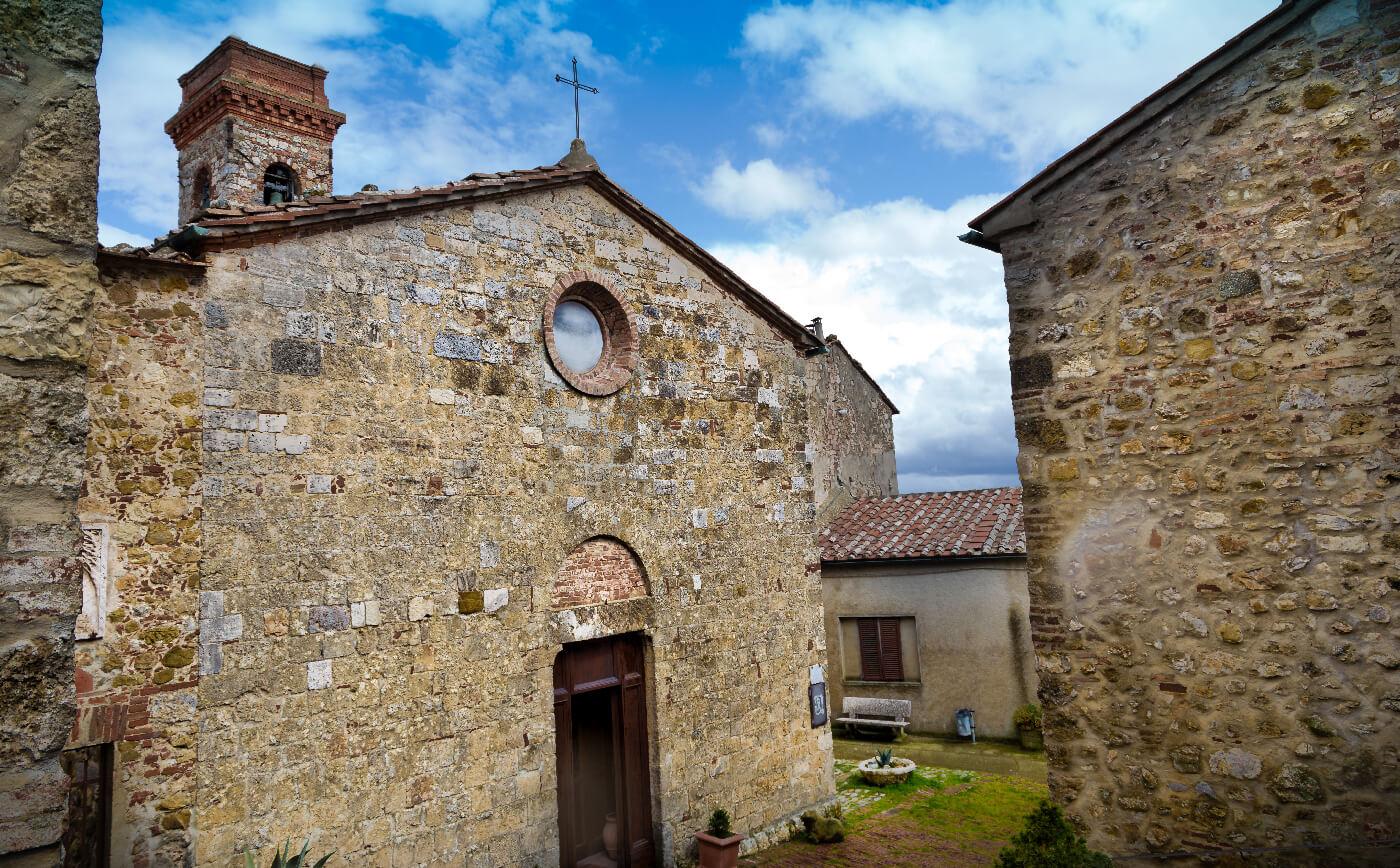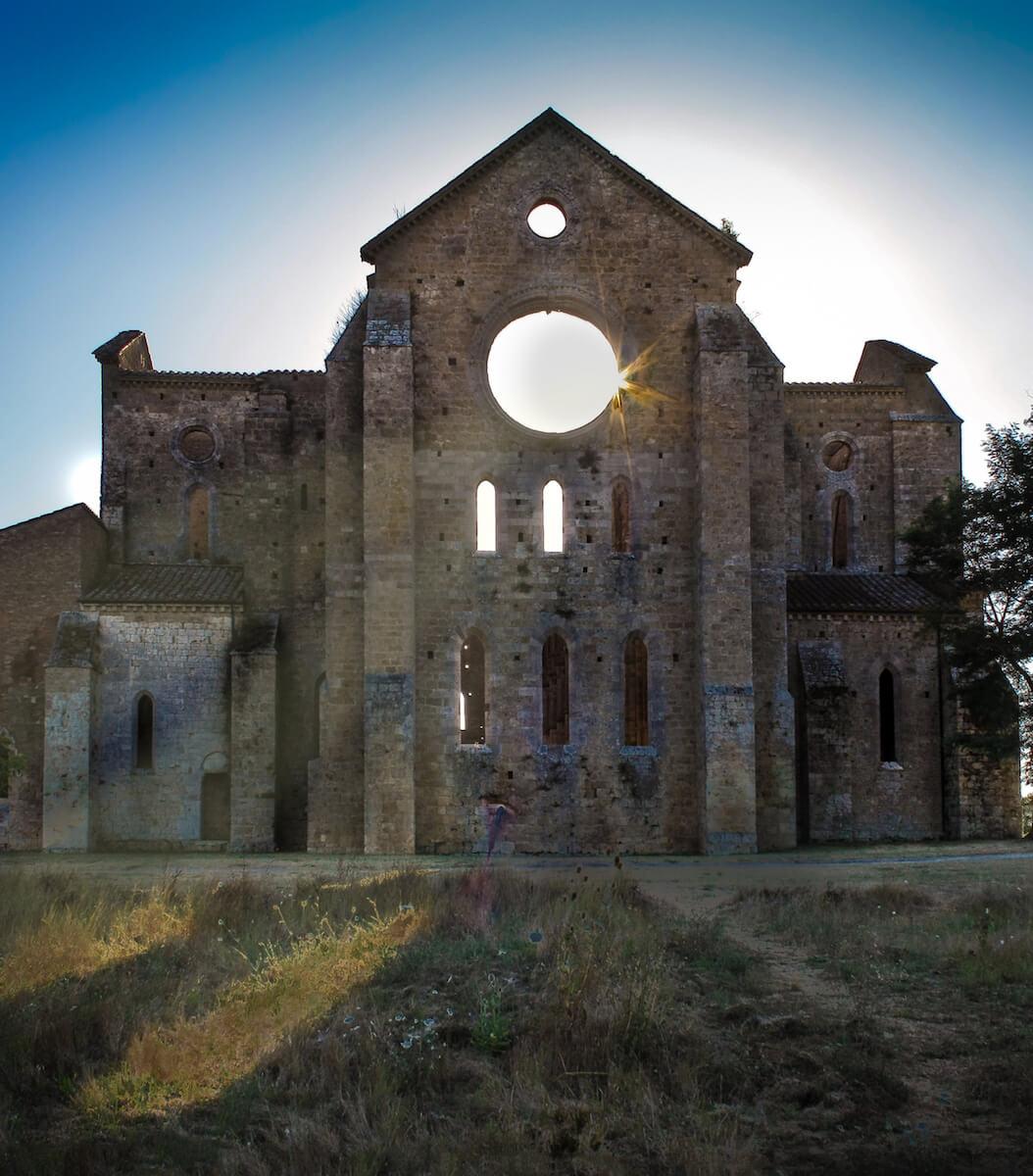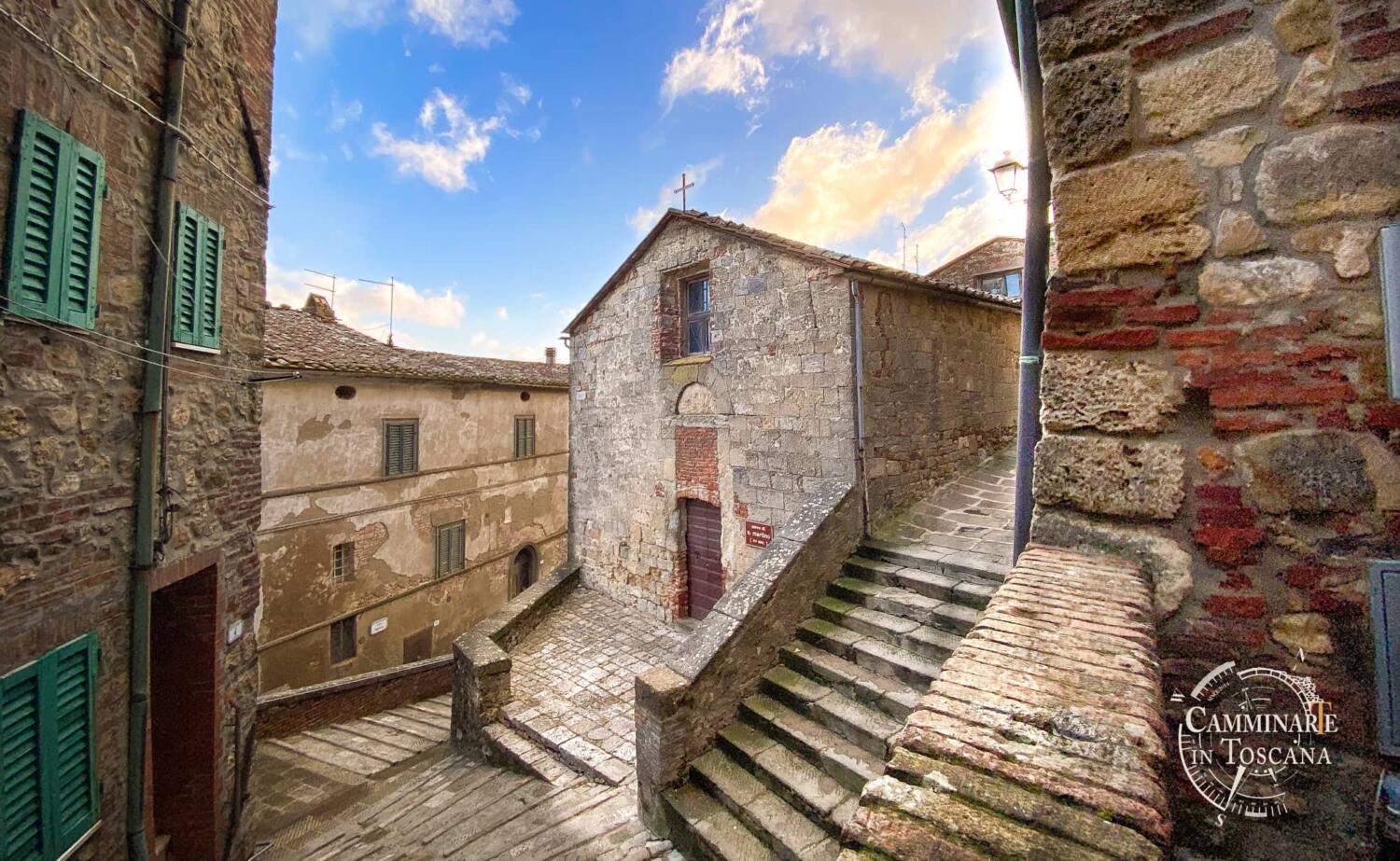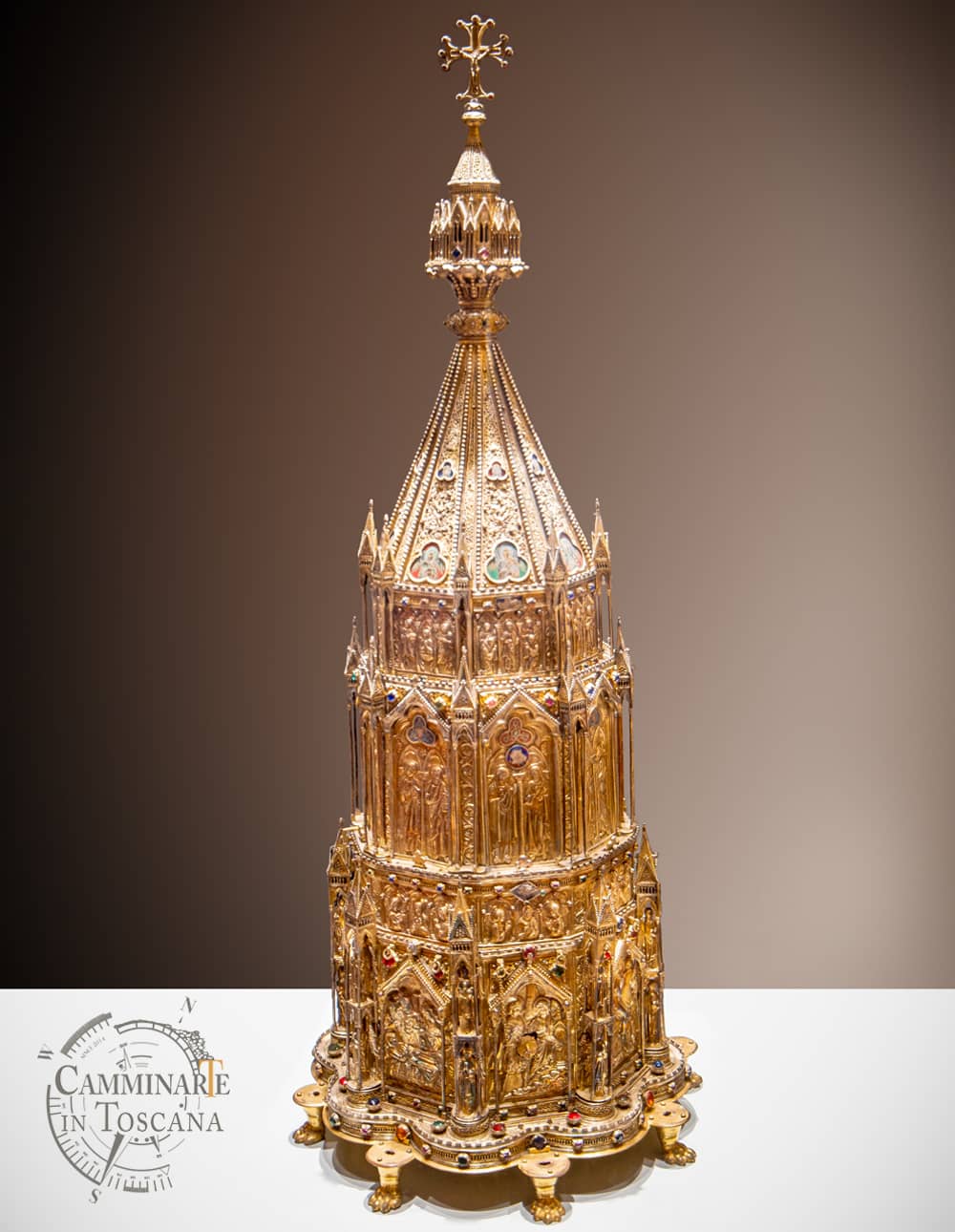The Visit to the Abbey of San Galgano
With the tour of San Galgano Abbey and Chiusdino you will be surprised to discover this little-known area of Tuscany – the Val di Merse – full of naturalistic glimpses and monuments of great charm; here the ruins of San Galgano Abbey rise in the Siena countryside, a few metres from the legendary sword in the rock. This place also preserves evidence of the centuries-old history of the Cistercians, the religious community that settled and remained there until the sixteenth-century.
We will begin our guided tour of San Galgano from the courtyard in front of the Abbey complex, where there is the path that was once the entrance to the grandiose complex. Starting from the surviving environment of the Scriptorium, we will see how the writing activity of the Cistercian monks was here organized. Walking through the spaces of this environment, we will also notice the surviving decorations, some of which contain a complex symbolic meaning. Inside the Chapter house – built according to the canons of Cistercian architecture –, we will see what the underground staircase, still visible in the centre of the space, we will see what the underground staircase was used for. Walking through the ruins of the majestic abbey church which, like a stone skeleton still standing solemnly towards the sky, you will immediately recognize the image of the ruins on many times seen on the internet or in television documentaries.
The majestic Abbey church
Today the Abbey is an icon of the medieval imagination and exerts a great attraction for visitors, thanks to the fact that it shows itself as a ruin; you should also know that the complex has been the first significant example of Gothic architecture in Tuscany, built thanks to the expertise of the same Cistercian monks who, in the same decades in which they were building the Abbey, were also called by the Republic of Siena to oversee both the management of the financial magistrates (called Gabella and Biccherna) and to oversee the building site of the town Cathedral itself. Finally, it is worth remembering how San Galgano even inspired great cinema personalities, such as the Soviet director Andrej Tarkovskij who wanted to film some scenes of Nostalghia in this place.
The sword in the stone really exists and is here
A few steps from the abbey, we will visit the Montesiepi Hermitage, a Romanesque building that has the peculiarity of being circular in shape, which is the reason because it is also called the Rotonda di Montesiepi.
Inside the church is where you will finally find the sword in the stone, the legendary sword that is popularly associated with the figure of King Arthur and the Knights of the Round Table; today this object is preserved protected under a glass bell. The figure of San Galgano and the events of his life are known by the inhabitants of the area thanks to this sword, kept inside the Hermitage.
But while that of the British king is a story with not well-defined historical outlines – in this day known thanks to the chivalric literature (romance) that has handed down to us –, the earthly affair of the knight Galgano has really occurred and we have got minutes testimonies of it by the saint’s canonization trial. Of Galgano we will retrace the salient events, so you can find out why, at some point in his life, the knight decided to become a hermit and why his sword is here today, stuck in the rock – inside a church that, among other things, also has a particular shape, which is linked to that of some templar buildings and to the Roman age mausoleums. Finally, we will discover what are the symbolic similarities – and the differences – between the sword of King Arthur and that of Galgano.
The Visit of Chiusdino
However, to fully understand the events of the ‘courteous hermit’ is necessary to visit the village of Chiusdino; in this suggestive small town, of Lombard origin, was where San Galgano was born around the middle of the twelfth-century. The historic centre still preserves its medieval structure, in the shape of a Curtis; thanks to the series of alleys, monumental entrances and churches, Chiusdino is one of the most fascinating places to visit in the Val di Merse.
We will begin the visit of Chiusdino from the Prepositura church, dedicated to San Michele Arcangelo. Although the interior has been rebuilt in recent times, what is interesting to see here is the San Galgano’s skull relic, now preserved inside a modern-style display case.
The visit to the Museum and the Reliquary of the head …
Leaving the church, we walk through an alley that directly will lead us in front of San Galgano’s birthplace. Inside, in addition to an Oratory that is cared for by a Confraternity dedicated to the saint, there is a stone recalling a truly prodigious event which involved the horse of the hermit saint …
We end the visit of the San Galgano Abbey and of Chiusdino with the Diocesan Museum, which can be accessed with the ticket already purchased to visit the Abbey. Although small in size, the museum endows the opportunity to learn about important works of art coming from the area, including local feudal families’ coats of arms, the original marble reliefs – works by Sienese artists – which were once on the facçde of San Galgano’s birthplace and, last but not least, the Reliquary of San Galgano’s head, a masterpiece of the Sienese thirteenth-century goldsmith’s art, temporarily on display in this institution and coming from the Museo dell’Opera del Duomo of Siena. We will closely observe this precious artefact – created by the goldsmith Pace di Valentino – going to discover the scenes from San Galgano’s life that are here represented and the symbolic links they have with the other figures in the reliquary.
The guided tour to the San Galgano Abbey and to the village of Chiusdino is an experience where you can both discover one of the richest areas of history in the Val di Merse and to travel back in time, on the tracks of knights, pilgrims and cathedrals builders.







